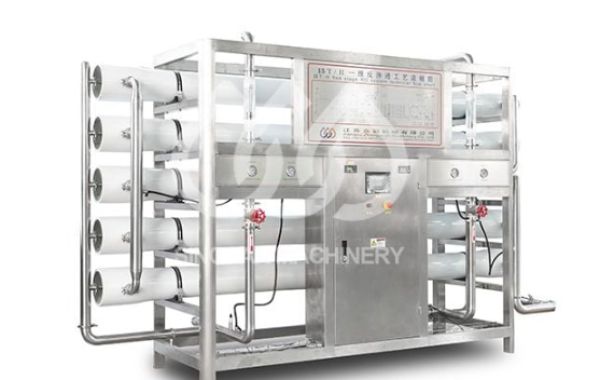Reverse osmosis (RO) produces clean, great-tasting water and is widely regarded as one of the most efficient water filtering techniques. Many uses for RO machines exist, such as faucets, aquariums, whole-house filtration, and restaurant filtration.
Whatever the initial quality of your water, there is probably a reverse osmosis water treatment machine that will work for you. The definition of reverse osmosis machines, their advantages, and their applications are described here. A ranking of the top reverse osmosis devices may also be found.

What Exactly is Reverse Osmosis?
As water is pushed under pressure through a semipermeable membrane during reverse osmosis, pollutants from unfiltered water, or feed water, are removed. To produce clean drinking water, water flows from the more concentrated (with more pollutants) side of the RO membrane to the less concentrated (with fewer contaminants). The term "permeate" refers to the freshwater generated. The trash, or brine, is the leftover concentrated water.
How Does a Reverse Osmosis Treatment Machine Work?
Water is purified using reverse osmosis (RO), a technique that involves forcing water through a semi-permeable membrane in order to remove pollutants. The operation of a reverse osmosis treatment device is as follows:
1. Pre-Filtration
Larger particles including silt, sand, and dirt are first removed from the water by means of a pre-filter.
2. Carbon Filtration
Following that, a carbon filter eliminates chlorine and other organic impurities that might alter the water's flavor and smell.
3. Reverse Osmosis
After that, the water is forced under intense pressure through a semi-permeable membrane to filter out dissolved salts, minerals, and other contaminants. Only water molecules may flow across the barrier; impurities are left behind.
4. Post-Filtration
A post-filter is subsequently used to eliminate any last-remaining contaminants and enhance the water's flavor and aroma.
5. Storage and Delivery
Whenever needed, the cleaned water is then kept in a tank and often provided by a special faucet in the sink.
6. Waste Water Disposal
A part of the water used in the RO process is released as wastewater, containing the contaminants that were filtered away. The effectiveness and layout of the system determine how much wastewater is produced.
Many pollutants, including dissolved salts, minerals, germs, viruses, and other contaminants can be effectively eliminated via reverse osmosis. In addition to being utilized for industrial and commercial purposes including desalination and wastewater treatment, RO systems are frequently used to purify drinking water for homes.
How to Clean a Reverse Osmosis Water Treatment Machine
Cleaning the reverse osmosis (RO) water treatment machine is essential to maintaining its optimal performance and prolonging its lifespan. Here are the general steps to cleaning a reverse osmosis water treatment machine:
1. Shut off the water supply to the RO Machine, and turn off the power to the Machine.
2. Open the RO faucet and let the water in the Machine drain out.
3. Remove the pre-filter, post-filter, and RO membrane from the Machine. Be sure to follow the manufacturer's instructions for proper removal.
4. Prepare a cleaning solution by mixing warm water and a recommended cleaning agent. The cleaning agent can be purchased from the manufacturer or a local hardware store.
5. Soak the pre-filter, post-filter, and RO membrane in the cleaning solution. Follow the manufacturer's instructions for the appropriate soaking time.
6. Rinse the pre-filter, post-filter, and RO membrane with clean water.
7. Reinstall the pre-filter, post-filter, and RO membrane back into the Machine. Be sure to follow the manufacturer's instructions for proper reinstallation.
8. Turn on the water supply to the RO Machine, and turn on the power to the Machine.
9. Allow the Machine to flush out any remaining cleaning solution and air bubbles. This may take a few minutes.
10. Test the water quality and taste to ensure the Machine is working properly.
It's recommended to clean an RO water treatment machine every six to twelve months, or more frequently if the water quality is poor. Be sure to consult the manufacturer's instructions for specific cleaning instructions for your machine.
Partner with us for premium reverse osmosis water treatment machine
Are you looking for a reliable and effective way to improve the quality of your drinking water?
A reverse osmosis water treatment machine might be just what you need. With a reverse osmosis system, you can remove a wide range of impurities from your water, including dissolved minerals, salts, bacteria, and viruses.
If you're interested in learning more about how a reverse osmosis water treatment machine can benefit you, click here, and let's get you started.







